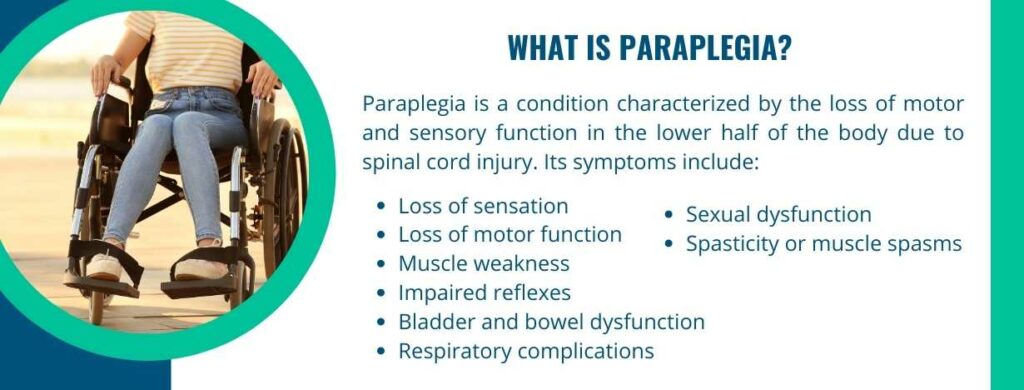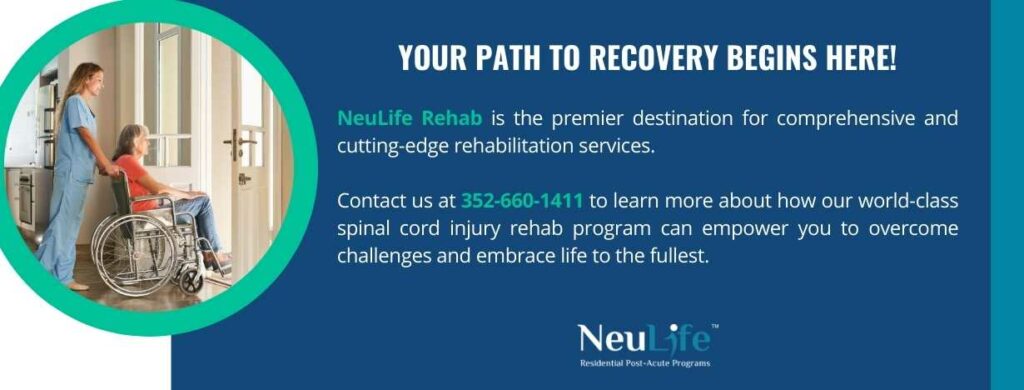Living with paraplegia presents unique challenges and opportunities for those affected and their loved ones.

This comprehensive guide sheds light on the causes, symptoms, and treatment options available for individuals navigating life with paraplegia.
Paraplegia is a condition characterized by the loss of motor and sensory function in the lower half of the body due to spinal cord injury. The spinal cord一a critical component of the central nervous system一becomes damaged, disrupting communication between the brain and the body's lower extremities.
The symptoms of paraplegia vary based on the extent and location of the spinal cord injury. Common paraplegia symptoms include the following:
These symptoms profoundly impact daily life, necessitating adaptive strategies and specialized care.
Understanding the underlying causes is essential for effective management and prevention. Here, we delve into the primary triggers of paraplegia:
Motor vehicle accidents, falls from heights, sports injuries, and other traumatic events can damage the spinal cord, leading to paraplegia. The forceful impact or compression of the spine disrupts the nerve pathways responsible for transmitting signals between the brain and lower extremities.
Diseases and infections: Certain diseases, such as spinal tumors, infections (like meningitis or spinal abscesses), and autoimmune disorders (like transverse myelitis), can affect the spinal cord and cause paraplegia by damaging nerve tissue or impeding blood flow.
Vascular issues: Conditions restricting blood supply to the spinal cord, such as spinal cord infarction, can result in tissue damage and subsequent paraplegia.
Congenital conditions: Some individuals are born with spinal cord or spine structural abnormalities, such as spina bifida or tethered cord syndrome, which can lead to paraplegia over time.
Degenerative conditions: Chronic conditions like multiple sclerosis or amyotrophic lateral sclerosis (ALS) can progressively affect the spinal cord and lead to paraplegia.
Complications of surgery or medical procedures: In rare cases, surgical complications or medical procedures involving the spine can lead to nerve damage and paraplegia.
Prompt diagnosis is crucial for effective management of paraplegia. Diagnosing paraplegia involves a thorough clinical evaluation that involves medical history assessment and physical examination.
Your physician may also employ diagnostic procedures to determine the extent of spinal cord damage and the underlying cause. This includes the following:
Furthermore, evaluating the patient's psychological well-being and assessing their functional abilities is crucial for designing a comprehensive treatment and rehabilitation plan.

Accurate diagnosis of paraplegia requires a multidisciplinary approach, often involving a team of medical professionals. The gathered information guides the development of a personalized paraplegia treatment strategy.
The treatment journey for individuals with paraplegia involves a comprehensive approach to enhance physical function, improve quality of life, and promote independence.
A combination of medical interventions, therapies, and assistive technologies are utilized to address the challenges posed by paraplegia. Let's explore the available treatment options:
Pain relief medications or interventions may be recommended to alleviate discomfort associated with paraplegia or related conditions. Additionally, medications that can help control muscle spasms and spasticity may be prescribed to improve comfort and mobility.
Are you or a loved one seeking the finest care and rehabilitation following a spinal cord injury or neurological condition?

NeuLife Rehab is the premier destination for comprehensive and cutting-edge rehabilitation services. Our modern and fully-equipped facility is designed to provide an optimal healing environment.
From advanced rehabilitation equipment to comfortable accommodations, every detail is meticulously crafted to enhance your recovery journey. Some of the programs we provide include:
Contact us at 352-660-1411 to learn more about how our world-class spinal cord injury rehab program can empower you to overcome challenges and embrace life to the fullest.
Your path to recovery begins here!
The material contained on this site is for informational purposes only and DOES NOT CONSTITUTE THE PROVIDING OF MEDICAL ADVICE, and is not intended to be a substitute for independent professional medical judgment, advice, diagnosis, or treatment. Always seek the advice of your physician or other qualified healthcare providers with any questions or concerns you may have regarding your health.

We know that choosing the next step in your recovery from a catastrophic illness or injury is complex. Together, we can help you take the next step.
Contact us with any questions today.